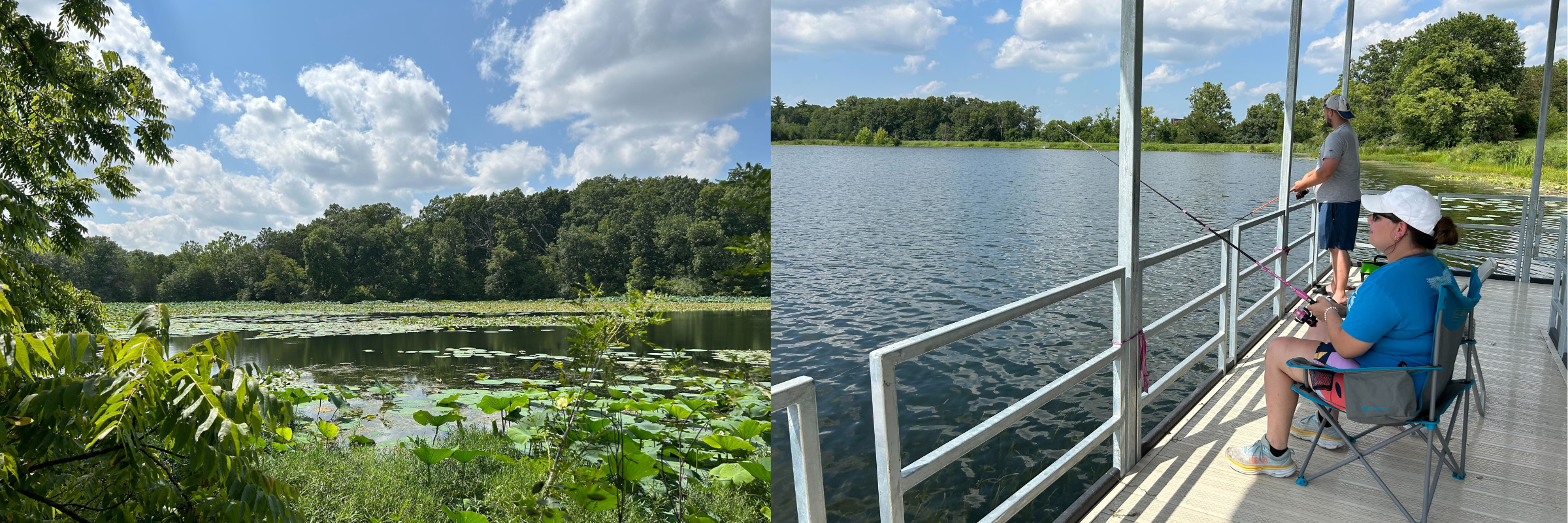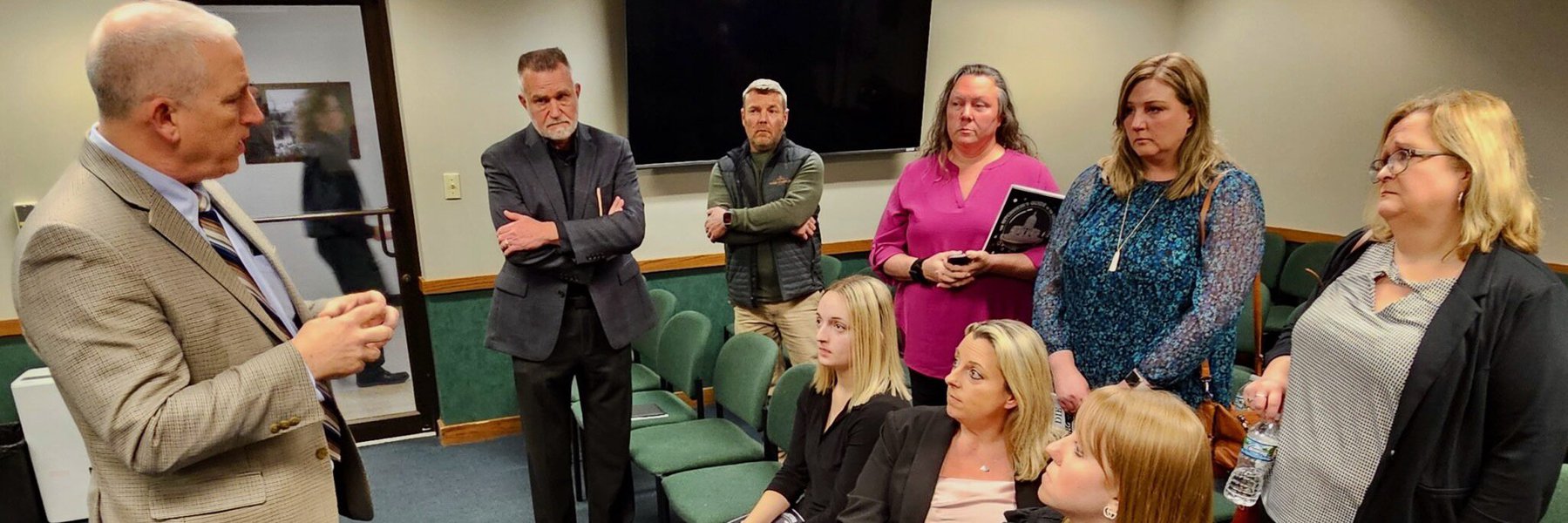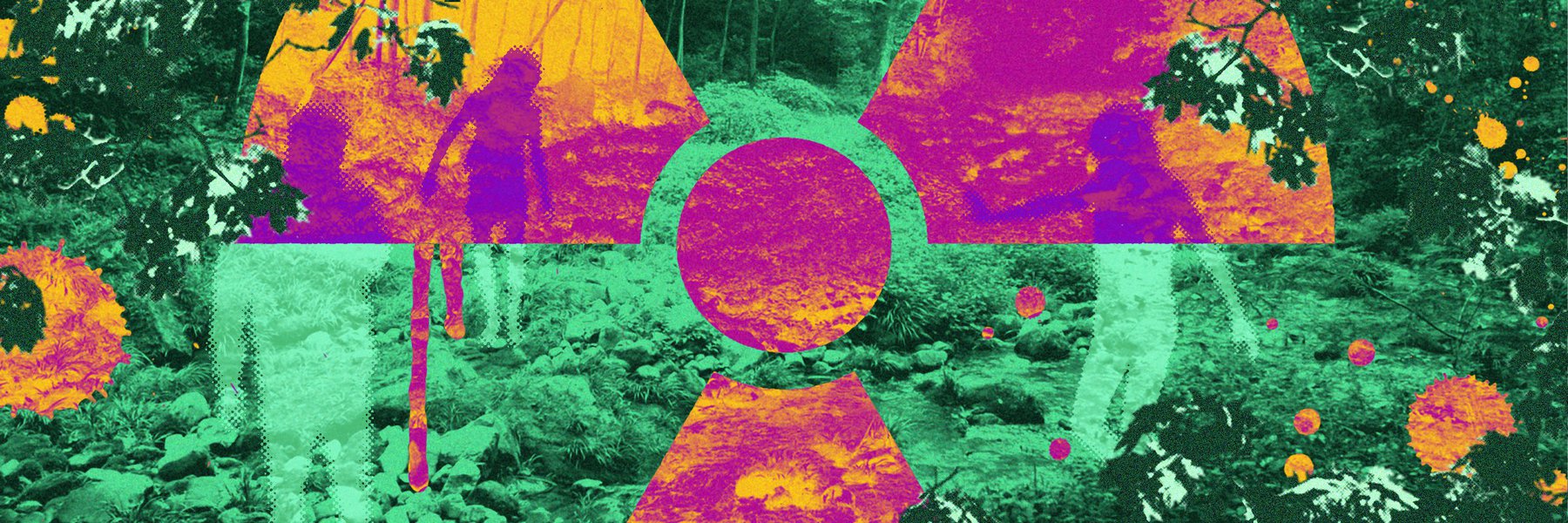Steve Allen and Eric Singsaas grew up hunting and fishing in August A. Busch Memorial Conservation Area and swimming in quarries along the Missouri River in St. Charles County, never knowing they were playing near nuclear waste.
“Everything we did,” Allen said in an interview, “we did together.”
Allen said he and Singsaas even attended a tour of an old uranium plant nearby — put on by the federal government in 1991.
“For the most part, we trusted what the government told us,” Allen said, “and surely, in our brain, if there was something bad there, (the government) wouldn’t allow us to be there.”
Decades later, Singsaas woke up with a numb foot. Within a week, he found out he had three cancerous brain tumors.
Two years later, he died.
It’s unclear what confluence of factors may have caused Singsaas’s cancer diagnosis and death in 2018, at the age of 50, or whether exposure to radioactive contamination played any part. But testing results from sampling conducted by the Department of Energy show that, in the 1980s and 1990s, three lakes within the Busch conservation area — almost 7,000 acres of some of the busiest fishing lakes and hiking trails in the state — contained higher-than-natural levels of uranium and radioactivity.

Several of the uranium readings are much higher than the EPA maximum level for uranium in drinking water, which was first set in 2003.
Health experts say the levels would only pose a measurable threat if someone drank the lake water regularly.
But in a region where contamination from America’s nuclear age has been allowed to spread even when the federal government and private companies knew of the danger, and generations of residents watched loved ones suffer from rare cancers and autoimmune diseases, those assurances can ring hollow. After discovering contaminated water flowing from Burgermeister Spring into the lakes in the mid-1980s, the Missouri Department of Conservation resisted calls to install signs warning visitors of the risks, dismissing it as the “most drastic thing we could do” and arguing that people would inevitably disregard any state-mandated prohibition on swimming in the lakes or eating fish.
And while the plant started processing radioactive material in the 1950s, federal records of uranium monitoring only date back to the 1980s. Neither the Department of Energy nor the Department of Defense has records from the 10 years the Weldon Spring plant processed uranium. The plant sat shuttered, and the groundwater wasn’t monitored for at least 10 years after that.
Denise DeGarmo, a political science professor who has researched and written about nuclear waste in the St. Louis region, said the government has never done sufficient testing to identify all of the contamination. She said the community’s trust in the federal government had eroded over decades of being ignored or brushed off.
“They know when something’s wrong,” DeGarmo said. “They know that when red water is showing up in a muddle somewhere, it shouldn’t be there. They know when their kids are getting sick.”
A federal study in the late 1990s cast doubt on potential health impacts from Weldon Spring Chemical Plant, which manufactured TNT and DNT and later refined uranium for the federal government. Waste from the plant contaminated quarries by the Missouri River and made its way into the groundwater and, eventually, to the Busch conservation area.
State officials monitored the waters and tested fish in the Busch conservation area, which abuts property that held the Weldon Spring Chemical Plant.
But when the Department of Energy demolished the uranium plant and emptied the pits where radioactive waste was stored — and which had been exposed to wind and rain for decades — officials decided to simply monitor the contamination in groundwater and surface water until it naturally dissipated.
And while the federal government has known since at least the 1980s that surface water around the Weldon Spring uranium plant was contaminated, the Busch lakes and other publicly-accessible bodies of water nearby have no signs warning visitors of potential hazards.
Starting in the 1980s and continuing into the 2000s, state officials repeatedly said signs weren’t needed because the contamination wasn’t significant enough.
In addition to the conservation area, radioactive contamination showed up in the 1980s in about 150 private drinking water wells, though the state health department concluded the water was affected by “naturally-occurring radioactive material.” Seventeen wells had radionuclide concentrations high enough to need to be routinely tested until the early 2000s, Lisa Cox, a spokesperson for the Missouri Department of Health and Senior Services, said in an email.
Almost 25 years later, the Missouri Department of Natural Resources told federal officials the contamination in some areas of the site isn’t going away quickly enough. The department noted in a 2021 letter to the U.S. Department of Energy that contamination levels in some monitoring wells near where radioactive waste was stored at the site aren’t decreasing.
“The department has expressed concerns with the long-term monitoring and surveillance since the record of decision…in 2004,” Connie Patterson, a spokeswoman for the department of natural resources, said in an email. The department doesn’t believe, however, that the Busch lakes pose a human health threat.
Through a spokesperson, the Department of Energy insists the site is now safe, and following the state’s 2021 concerns, the federal agency created a working group to identify locations for additional monitoring wells and evaluate solutions for further decontamination.
Decades of contamination
St. Louis played a pivotal role in supplying uranium for the Manhattan Project, the name given to the effort to develop the first atomic bomb during World War II.
Uranium processed by workers at Mallinckrodt Chemical Works in downtown St. Louis was used in the first sustained nuclear chain reaction in Chicago, a key breakthrough in research for the bomb.
But for decades after the war, radioactive waste from the project was improperly transported and stored, causing contamination that remains in St. Louis and St. Charles counties today.
Waste from Mallinckrodt was stored at the St. Louis airport following the war in open piles and deteriorating barrels. Contamination seeped into Coldwater Creek, which runs through busy suburbs in St. Louis County, and polluted its waters for miles.
In the 1960s, the waste was sold and transported to Hazelwood for a private company to extract valuable metals. At that site, too, radioactive waste was able to erode into Coldwater Creek.
Once all of the valuable materials had been processed and moved offsite, the rest was scooped up with contaminated soil and dumped into the West Lake Landfill in Bridgeton, where it remains today.
After World War II, Mallinckrodt started processing uranium in Weldon Spring for the federal government’s Cold War-era nuclear program.
Waste from the plant was stored in open pits, and contaminated material from World War II was dumped in a quarry on the Missouri River.
Rainwater carried radioactive material from the disposal ponds, through streams and groundwater, more than a mile away into August A Busch Memorial Conservation Area, where uranium contaminated streamways and three fishing lakes.

Kim Lindsey remembers passing the old buildings of the shuttered chemical plant in the 1990s when her Army Reserves unit trained near the Weldon Spring site. She didn’t go in them, but she often passed containment domes that held radioactive waste.
“They said that it had been cleaned up already, even though there were little signs all over saying that the place was radioactive,” Lindsey said.
Lindsey said her unit once found an old train car full of 55-gallon drums in the woods near the site. They weren’t sure what was in them.
It wasn’t until years later that Lindsey learned about the radioactive waste around St. Louis and its connection to the Manhattan Project. She said it was “lousy” her unit wasn’t made aware of what was around them.
“I don’t think most of us knew,” she said. “Because we would joke about, ‘Well yeah, if we step on this side of the barbed wire, we’ll be able to light our way home when we’re old.’ You know, it was funny.”
She added: “Well, it’s funny in your 20s when you have no clue.”
Now 56, Lindsey said she sees a hematologist and an oncologist regularly, though the doctors don’t know what’s wrong. Her white and red blood cells take turns spiking and falling.
When she was training at Weldon Spring, Lindsey struggled with uterine fibroids and ovarian cysts. She had a total hysterectomy about 10 years ago because she was at risk of uterine cancer, she said.
“When I was younger, it didn’t even bother me,” Lindsey said of the radioactive waste around her, “but I just keep thinking about how many other people that were out there training with me…are there people that are sick?”
Uranium in public lakes
Sampling from the 1980s and ‘90s show uranium levels in the lakes and springs around the Mallinckrodt site and within Busch often exceeded what is now the Environmental Protection Agency’s limit for drinking water: 30 micrograms per liter.
At that time, the EPA didn’t have a limit for uranium alone, though it had standards for radioactivity.
Testing conducted by the Department of Energy in 1989 showed uranium levels in Busch Lake No. 34 were as high as 57.6 micrograms per liter, almost twice the modern limit for drinking water. At Busch Lake No. 36, uranium levels reached almost 80 micrograms per liter in 1987. They fluctuated over the years but hit almost 80 again in 1996.
Uranium levels were typically lowest in Busch Lake No. 35. Except for one extraordinarily high reading the department determined was an outlier, they never rose above the modern EPA drinking water standard once testing commenced.
Burgermeister Spring, named after the family that lived there before World War II, feeds into the Busch conservation area and was found to have concentrations of uranium as high as 250 micrograms per liter, almost nine times the modern EPA drinking water limit, according to a 1987 report by the U.S. Geological Survey.
Uranium concentrations in Burgermeister have fallen over the years, but routinely exceeded 30 micrograms well into the 2010s. It repeatedly exceeded 100 micrograms until the early 2000s. Detections over 150 micrograms per liter would trigger contingency efforts.
A risk assessment performed by the Department of Energy in 1997 found the contamination at that time would not pose a risk for recreational visitors. The EPA’s limit of 30 micrograms per liter for drinking water is based on someone drinking two liters of water a day for decades.
Even then, Kathy Higley, a distinguished professor at Oregon State University who teaches courses on radiochemistry and dosimetry, said consuming water every day at the EPA limit of 30 micrograms per liter would only result in a dose of 4 millirem per year. The average annual dose of radiation from everyday sources — such cosmic radiation, X-ray machines and traveling by airplane — is 620.
That 4 millirems is “kind of in the noise,” she said.
“At really, really low doses…we can’t measure observable risks of cancer because there’s such a high natural background,” Higley said.
Finding out about the cleanup at Weldon Spring years later made Dwain Jansen wonder if he ate contaminated fish when his family frequented the Busch conservation area in the 1980s. He said his family caught about 200 pounds of fish every year, primarily at Lake No. 34.
His wife’s family fished there a lot, too. Jansen’s wife, Amber, died from complications related to cancer in 2011 at the age of 42.
“It’s too young for someone to die,” Jansen said. “Can I point this toward Weldon Spring or the fish or well water? No, I have no definitive answer.”
Public awareness and cleanup
For decades, there have been no signs warning visitors the Busch lakes contained uranium.
Starting in the 1980s, the federal Department of Energy and the Missouri Department of Conservation simply said that they weren’t needed. John Vogel, who managed the Busch conservation area for the conservation department, told the St. Louis Post-Dispatch in 2003 the department didn’t want to put up signs and create a panic.
By then, uranium concentrations in the lakes had fallen compared to the high readings of the 1980s and 1990s. Asked if the department would make the same decision today, conservation department spokesman Dan Zarlenga said any agency communication about human health would be informed by the department’s state and federal partners, including the state health and natural resources departments and the EPA, which “have the expertise to make these determinations.”
When officials began studying the site and preparing to remediate it, they looked into strategies to decontaminate the groundwater, the Environmental Protection Agency said in a statement.
But both “conventional and innovative techniques for active remediation were ineffective due to the site’s complex hydrogeological features,” EPA spokesperson Kellen Ashford said in an email.
Zarlenga said the department was planning to collect fish from the Busch lakes this fall to test for uranium and other heavy metals.
What remains unclear is how dangerous the waters in Busch conservation area were in the years during — and just after — Mallinckrodt’s uranium operations in Weldon Spring.
Data provided by the Department of Energy show sampling started in 1987. But the department’s remedial investigation, released in 1992, references studies from the late 1970s and mid-1980s.
In an email, a Department of Energy spokesperson said the first samples the department performed were released in a report in 1986. It took control of the site from the Department of the Army in 1985.
The report says records “of routine environmental monitoring by (the Army) during previous years are unavailable.”
Asked about monitoring data, the Department of Defense referred questions back to the Department of Energy, saying it was not aware of any uranium monitoring by the federal government before 1985.
Photo Credit: Ashley Cardwell, seated, and Donovan Sensel fish at Lake No. 34 in August A. Busch Memorial Conservation Area this summer. Lakes and springs in Busch conservation area were contaminated decades ago by a uranium processing facility that operated until the 1960s. (Allison Kite/Missouri Independent)




